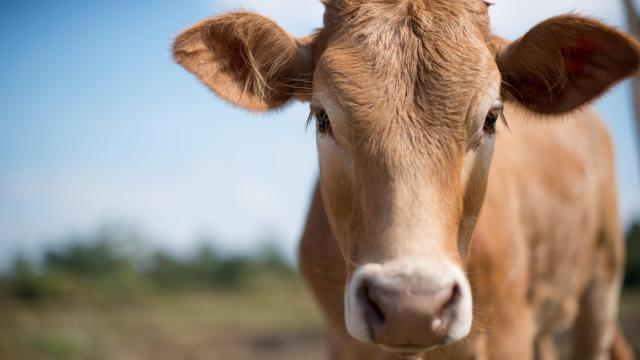A case of bovine spongiform encephalopathy — more colorfully known as mad cow disease — has been detected on a farm in the Netherlands. It’s the first time that an infected cow has been reported in the country in over a decade. Authorities say the cow should not pose a threat to human health, but they’re looking for other animals that may have been infected by the cow or from the same source.
Bovine spongiform encephalopathy, or BSE, is a type of prion disease found in cows. Prions are the misfolded and damaging forms of naturally occurring proteins that are often found in the brain. When these rogue proteins encounter their normal counterparts, they somehow force the latter to misfold as well, causing a domino effect that destroys the brain over time. There are different incubation periods, depending on the disease, but all prion diseases are currently 100% fatal once symptoms appear.
In humans, the most common prion illness (but still very rare in general) is Creutzfeldt-Jakob disease, or CJD. Most cases of CJD are sporadic, meaning they spontaneously appear, usually in later life. Other forms can be caused by inherited mutations or caught from contaminated surgical equipment or donated human organs during certain procedures. But the most notorious form of the disease is variant CJD, which is caught from eating the beef of cows infected with BSE.
In the 1980s and 1990s, at least hundreds of people developed variant CJD from contaminated beef. The bulk of these cases were limited to the UK, where earlier outbreaks of mad cow were similarly concentrated. These outbreaks appeared to have been fuelled through the practice of feeding cows the meat of other infected cows or from sheep infected with their own prion disease, called scrapie.
Widespread bans of British beef, along with changes in feeding and slaughter regulations, appeared to stem the threat of mad cow by the mid-1990s. Since then, there haven’t been large-scale outbreaks of either BSE or variant CJD. But much like in humans, BSE can still pop up in cows, making any discovery on a farm an urgent priority to contain.
On Wednesday, the Netherlands’ Ministry of Agriculture reported the BSE case, the first to be detected since 2011. According to local officials, the cow was found before it entered the food chain, so it shouldn’t directly pose any danger to people. But given the possibility that the cow may have infected surrounding animals on the farm or contracted BSE from contaminated feed, authorities are looking for other transmission chains.
“Offspring, and animals that have had the same feed, and animals that have grown up with this bovine are being tracked down, tested for BSE,” and will be put down, Agriculture Minister Piet Adema said, the NL Times reported. “There is a chance that other cattle have also eaten this feed and become infected from it. In that case, measures must be taken to manage risks to food safety and public health.”
The exact type of BSE found in this cow is not known at the time. “Classic” BSE occurs when cows eat contaminated meat, but atypical BSE seems to happen spontaneously, usually in older cows. It’s unknown whether eating contaminated beef from cows with atypical BSE can cause variant CJD in people. But there does seem to be a strong genetic component to catching variant CJD from cows in general. The initial human outbreaks were much smaller than experts expected, and it’s since become apparent that the vast majority of cases have occurred among people with a particular version of their human prion protein gene.
Some scientists have wondered whether having a different version of the gene may only delay the onset of variant CJD, though, not prevent it entirely (in at least one case of transmitted CJD, it reportedly took three decades for symptoms to appear following exposure). And if that’s true, then there still could be future cases stemming from the original BSE outbreaks in the years to come. Another potential prion-related threat may come from the spread of chronic wasting disease among North America’s deer population, though no evidence of deer-to-human transmission has been found yet.
